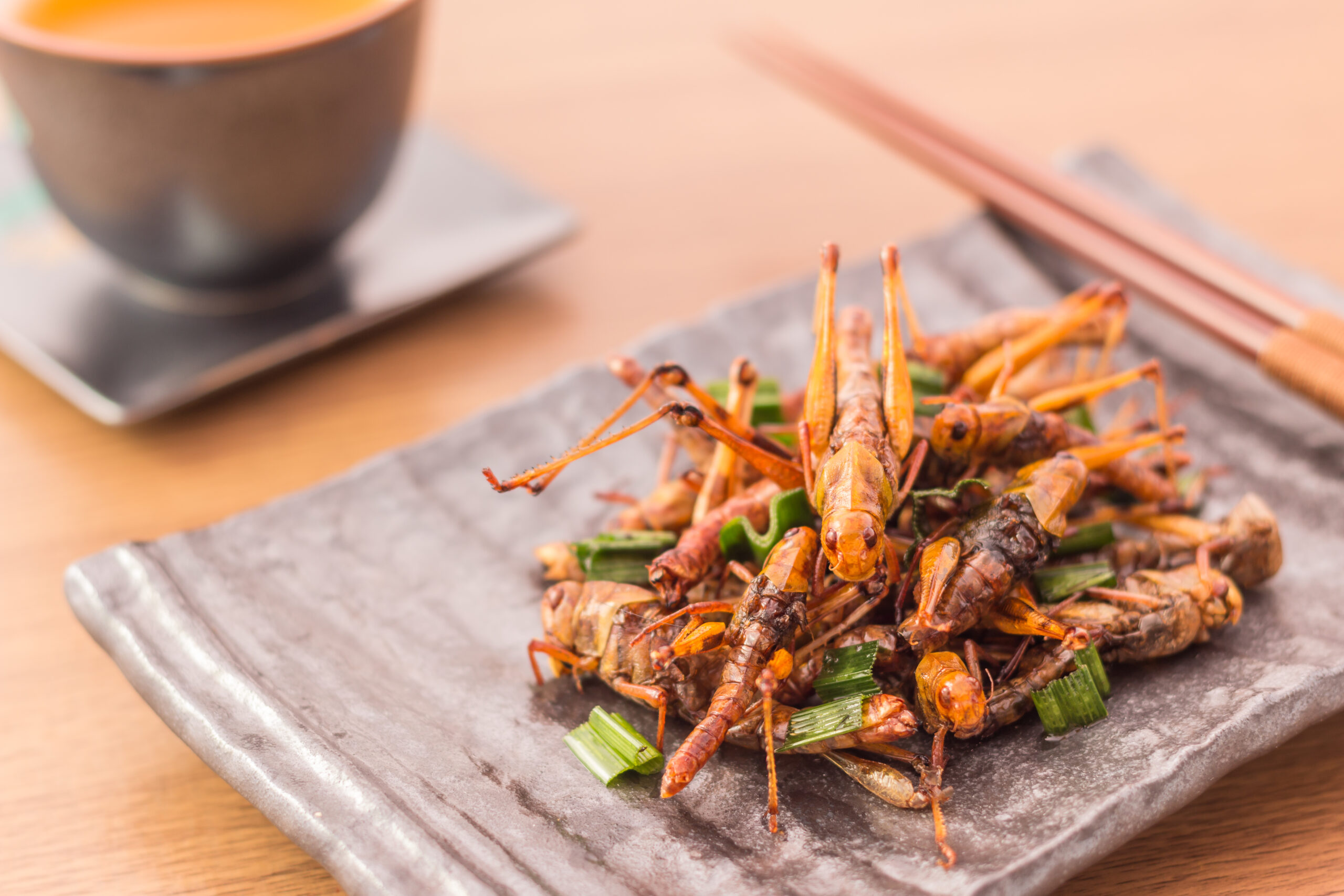One of the challenges facing the world’s population is determining how to feed everyone in a sustainable manner. The global population is estimated to reach around 10 billion in 2050,1 with a consequent 60% increase in demand for food.2 However, increasing livestock production requires expansion of agricultural land and a consequent rise in water, heat, and animal feed consumption. Moreover, it is estimated that livestock accounts for 20% of greenhouse gas emissions.1
Is edible insect protein a viable alternative?
The production of meat substitutes requires a significant amount of processing2 and their popularity has recently declined.3 Insects are a potential alternative to livestock or meat substitutes. Edible insects are a great source of protein and produce less greenhouse gases, require less land than traditional livestock, and have a high food conversion efficiency to produce the same amount of protein. For example, feed-to-meat conversion rates for crickets are twice as high than for chickens and 4–12 times higher than for cattle and pigs.4 It has been estimated that insect farming would use up to 50–90% less land per kg protein and produce up to 1000–2700 g less greenhouse gas emissions per kg mass gain compared with conventional livestock farming.5
There is evidence that insects were eaten by early humans.6 Indeed, insects are part of the modern diet in many countries, such as China, Thailand, Africa, Mexico, and Colombia,7 and are consumed by around 2 billion people worldwide.8 Around 2000 edible species have been indexed within the eight main orders: cockroaches and termites; beetles; flies; cicadas and stink bugs; bees, wasps, ants; butterflies and moths; dragonflies; and crickets, grasshoppers, and locusts.7 The house cricket and yellow mealworm are most commonly farmed for human consumption.7
While the nutritional composition of insects varies between species, they are generally an excellent source of protein but contain a higher fat percentage than their meat counterparts.7
What about food safety?
The use of insects as a large-scale food source is not without issues, however. Food safety has been highlighted as a concern,6 in common with other animal- and plant-based foods. Some people are at risk of experiencing an allergic reaction to certain types of insects, such as crickets and mealworms.4 Moreover, there would be a need to rear insects free of pesticides as wild insects may feed on contaminated vegetation, which has the potential to lead to food poisoning.4 Effective control measures and hygiene practices would need to be implemented to remove the risk of microbial infections as various pathogenic bacteria, such as Bacillus, Campylobacter, Clostridium, Staphylococcus, Streptococcus, and Vibrio have been reported in edible insects. Mycotoxins, antinutritional compounds (naturally occurring substances that can inhibit intake, digestion, absorption, and utilization of nutrients and which may lead to adverse effects when consumed), heavy metals, and parasites are other factors that need to be considered in the rearing and processing of edible insects.4
How do we persuade consumers to give insects a go?
One of the major barriers to widescale consumption of insects is lack of consumer acceptance in Western countries.4 Their consumption is generally regarded with disgust and met with aversion.4 Neophobia, or the fear of trying new foods, is a significant factor.9 One potential solution to improve palatability from a consumer perspective is to reduce the visibility of insects in food by processing them (for example, including them in burgers or protein bars).7 And, although some people may baulk at the idea of insects as part of their diet, they may already have consumed them – the food colorant carmine (E120) and carminic acid are produced from scale insects.9
Conclusion
If this article has inspired your palate, why don’t you sample some insect haute cuisine for yourself? And if you want to find out more, you could always attend the Insects to Feed the World conference in June in Singapore. If, however, trying out insects is a bit too much, you could also limit your environmental impact by reducing your meat intake, sourcing local ingredients, buying in-season produce; using public transport, carpooling, cycling, and walking; reusing, repairing, and recycling items; and using less energy and water.
At Scientific Group, our approach to business encompasses targets for reducing our carbon emissions, offsetting our greenhouse gas emissions, adopting climate-friendly travel options and offering a salary exchange scheme for electric vehicles, and we have an in-house Climate Committee looking at ways we can do more. We are committed to driving medical communications towards a sustainable future and to make every effort to leave the planet as we found it. If that means eating insects, then we’re willing to give it a go!
References
- Queiroz LS et al. Edible insects as an alternative protein source: a review on the chemistry and functionalities of proteins under different processing methods. Heliyon. 2023;9(4):e14831.
- Orkusz A. Edible insects versus meat-nutritional comparison: knowledge of their composition is the key to good health. Nutrients. 2021;13(4):1207.
- The Grocer. Meat-free growth tailing off as retailers shrink ranges. https://www.thegrocer.co.uk/plant-based/meat-free-growth-tailing-off-as-retailers-shrink-ranges/677580.article. Last accessed February 2024.
- Lange KW, Nakamura Y. Edible insects as future food: chances and challenges. J Future Foods. 2021;1(1):38-46.
- Payne C et al. Are edible insects more or less ‘healthy’ than commonly consumed meats? A comparison using two nutrient profiling models developed to combat over- and undernutrition. Eur J Clin Nutr. 2016;70:285-91.
- Liceaga AM. Edible insects, a valuable protein source from ancient to modern times.
Adv Food Nutr Res. 2022;101:129-52. - Alhujaili A et al. Insects as food: Consumers’ acceptance and marketing. Foods. 2023;12(4):886.
- Ros-Baró M et al. Consumers’ acceptability and perception of edible insects as an emerging protein source. Int J Environ Research Public Health. 2022;19:15756.
- Frandsen RJN et al. Heterologous production of the widely used natural food colorant carminic acid in Aspergillus nidulans. Sci Rep. 2018;8(1):12853.




